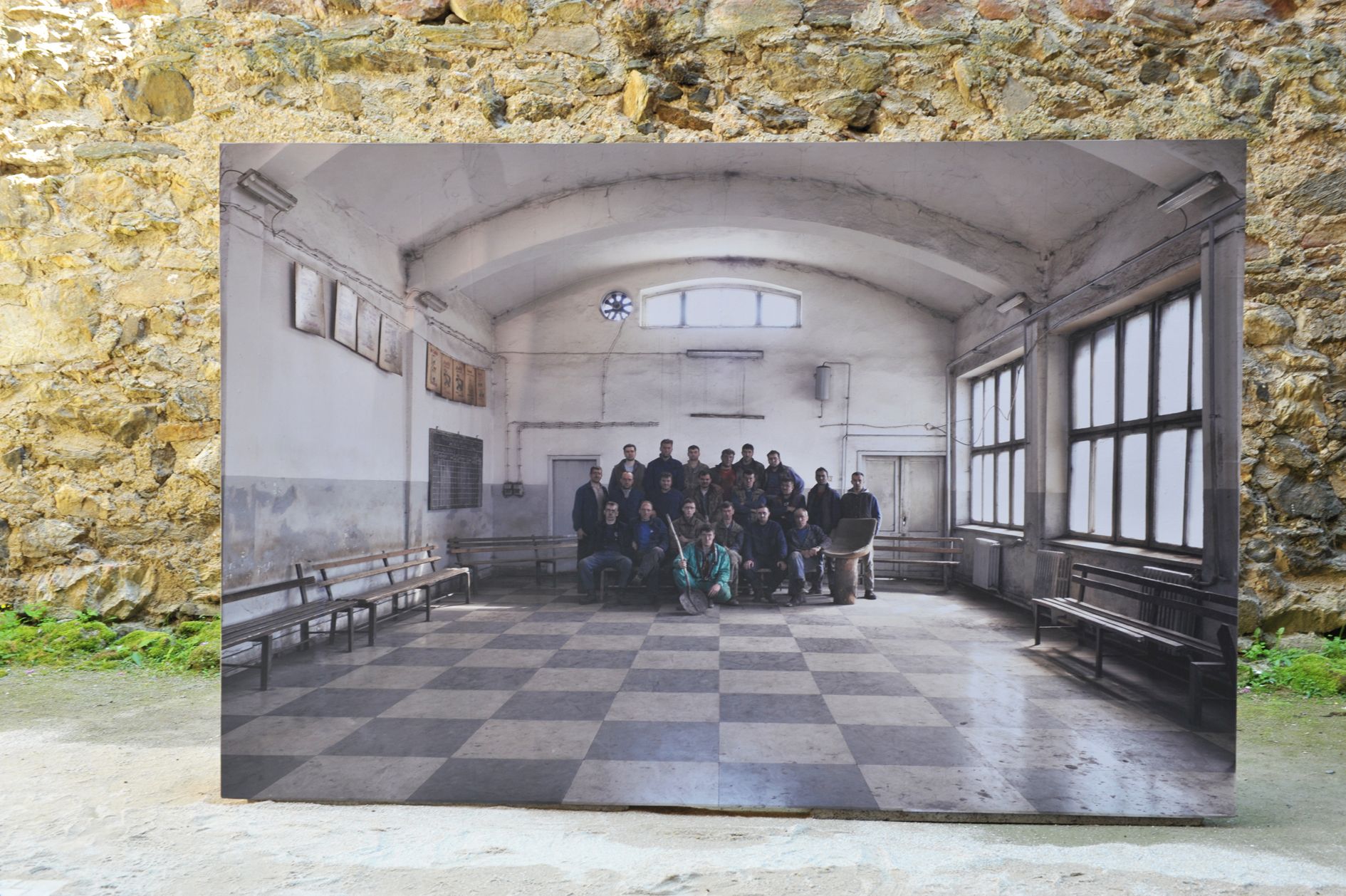… Was Haben Wir Dann Heute? (So, What Do We Have Today?)
BackArtists
- With
Information
The 1970s were a time of social change. The current exhibition “Die 70er. Damals war Zukunft” (The 1970s. The Future Was Then) in Schallaburg Castle focuses on this turbulent time and its relevance today. The project “… was haben wir dann heute? (so, what do we have today?)” poses a question to the exhibition’s title: If the future was then, what are the time vectors of the present? The four artists Danica Dakić, Petja Dimitrova, Oliver Ressler, and Anna Witt explore the relevance of utopias in public opinion – and what visual language they use – in in this day and age of permanent crisis. For the four artists from different corners of Europe, the future in the 1970s was defined by and associated with different political and social promises. How is the future in the 70s expressed today? For whom and at what scale is it made? The artistic contributions located around the Schallaburg Castle revolve around both normal and exceptional states, history and stories, and (under)representation.
(Maren Richter, curator)
Contributors
- Kuration
Contributions
Anna Witt
"Landschaft des Eigensinns"
The artistic practice of the German artist Anna Witt revolves around various methods of collaboration. Her actionist, interventionist works, which are arranged like experiments, often serve to give those involved space to articulate themselves. Based on a kind of local tradition in which anniversaries and birthdays are celebrated publically by placing banners and mannequins in front of the house of the person being honored, Witt decided to tap local inhabitants’ creative potential for five months to test whether the slogan from the 1970s of “the personal is political” still has social relevance today. Throughout the summer of 2016, banners with socio-political demands will therefore be visible along the road to Schallaburg Castle.
Oliver Ressler
"The Economy is wounded – I hope it dies!"
The Austrian artist Oliver Ressler analyzes political situations and organizational forms with an eye on the history of very different places. He searches for alternative ways of living and forms of politics, which he integrates into films and photographs and presents as options for taking action. Ressler uses Guy Debord’s quote from 1968 in the title to look at the situation of cargo shipping on the Danube near Schallaburg, which has virtually exploded since the 1970s when free trade in Europe expanded and which will most likely take on new economic and ecological dimensions in the future, for example with the ratification of the TTIP agreement. According to the statistics for the last few years, roughly 10 million tons of goods are shipped to and through Austria every year on the Danube. Although the Danube has not lost its significance as one of the oldest trade routes, the question still remains: Just how many more cargo ships and how much more fuel can be tolerated in the increasingly borderless, global circulation of goods?
Petja Dimitrova
"kommen bleiben zusammen"
The Bulgarian artist Petja Dimitrova, who lives in Vienna, explores socio-political themes in her videos, drawings and prints. For the last few years, she has been working with NGOs and various groups, like those involved in protests by refugees. Her contribution to the exhibition in Schallaburg Castle – a comic in which four super heroes use their immigrant superpowers to discover what fears and hopes will define the future – is based on conversations with locals as well as events of the last few months concerning the welcoming of refugees. The comic in newspaper form is being sent to households in the area and will be followed up by an event in the fall of 2016 in which the artist will cooperate with various local initiatives.
Danica Dakić
"Ferleza"
The Bosnian artist Danica Dakić is a professor of public art and new strategies at the University of Weimar. In her work, she investigates the role models of different groups. A central theme is the search for a space in which people can live out the identities they have created for themselves. “Ferleza” (The Reader) is based on the artist’s research in Brezo, a coal mine near Sarajevo. She not only refers to a film from the 1970s about the no longer pristine image of working-class heroes in Yugoslavia, she also creates a link between the present and the future in the 1970s. The mine, which was built during the Austrian-Hungarian Empire, is antiquated with obsolete technology, but Bosnia must keep up with its international competitors. The heroism of the workers comes from their working under these conditions every day. Dakić collaborated with the miners to create a photographic monument to today’s laborers that seems oriented toward the past. The title refers to the daily ritual of reading the safety guidelines in the Ferleza room before the shift begins.


